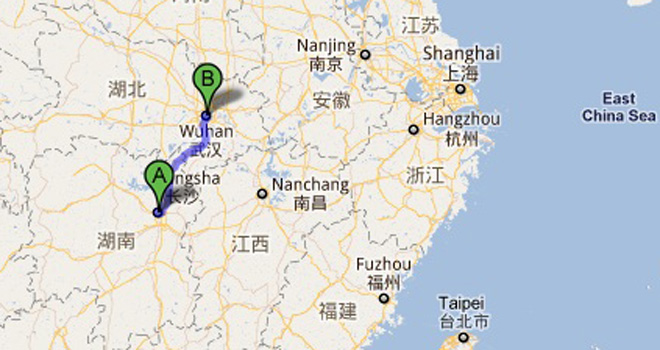The select global fleet of self-driving cars has a new Chinese addition, and the developers claim the intellectual property behind it was created entirely at a Chinese university.
After gaining early publicity five years ago, the robot-driven vehicle made the trip between the interior Chinese metropolises of Changsha and Wuhan in three hours and 20 minutes, the China Daily reported.
The state-run paper reported that the drive took place in inclement weather on July 14, but the vehicle nonetheless managed to overtake 67 other vehicles at an average speed of 54 miles per hour.
The Chinese project is hardly alone. Autonomous vehicles have been in development worldwide for years, with much of the action centered around the DARPA Grand Challenge competitions, supported by the U.S. Department of Defense.
One team of veterans of the DARPA competitions last year set out for the 2010 Shanghai World Expo from Parma, Italy, with a vehicle that handled the driving 90 percent of the time.
Google has also developed a driverless car system for a small fleet of modified Toyota Priuses, and told The New York Times last year that the cars had driven 140,000 miles with minimal human interference–on public roads.
And Sebastian Thrun, the Stanford artificial intelligence professor and scientist at Google heading the project, says that he commutes to work everyday in one of the cars.
This may explain why the China Daily made a point to claim that the underlying intellectual property was developed by researchers at China’s National University of Defense Technology. The paper reported there was earlier speculation that foreign technologies were in use when the car was previously exhibited.
“Some foreign experts asked me directly whether the artificial intelligence system was really developed with our own proprietary technologies,” research team member Dai Bin told the paper.
If the car really drove with no human assistance through three hours and 20 minutes of Chinese traffic, however, this marks quite an achievement. Other robotic car projects, including the Google and Parma-Shanghai vehicles, require human assistance on occasion.
A daytime drive between two major cities in China is likely to present at least a few unpredicted challenges.
The world took notice of the clogged expressways of China last year when a 60-mile column of cars and trucks were stuck in a 10-day traffic jam on a major coal delivery route.
The Chinese car is based on a FAW Hongqi HQ3 luxury car. The word “hongqi,” meaning “red flag,” refers to a symbol of communism.
The China Daily article didn’t say anything about the legality of driving robotic cars. In the United States, Nevada is the first state to explicitly acknowldge the phenomenon, and to give it an official green light.
Graham Webster is a journalist, consultant, and researcher working on technology and politics in China and the United States. Now based in New York, he has lived and worked in Beijing, Tokyo, and Washington, D.C. Follow him on Twitter.
Have an idea or story tip? Please send thoughts to: idealab@talkingpointsmemo.com.









